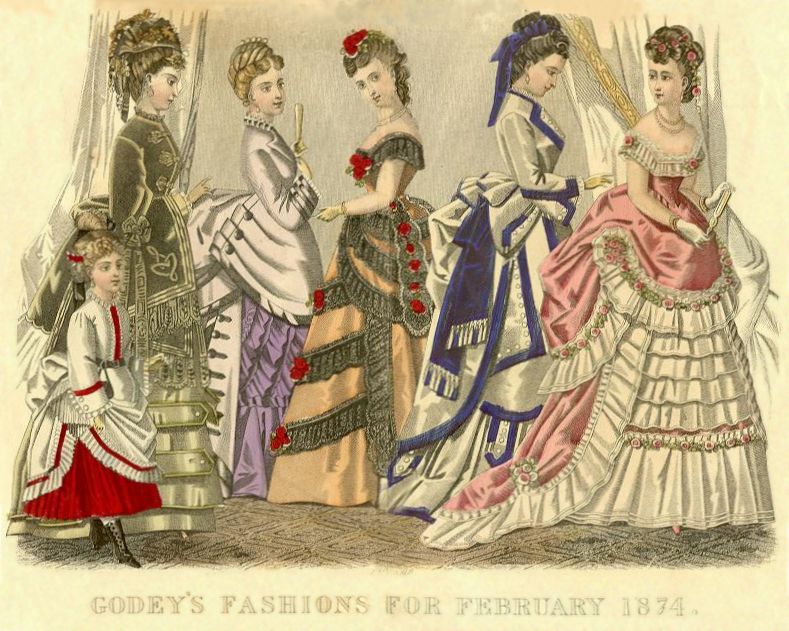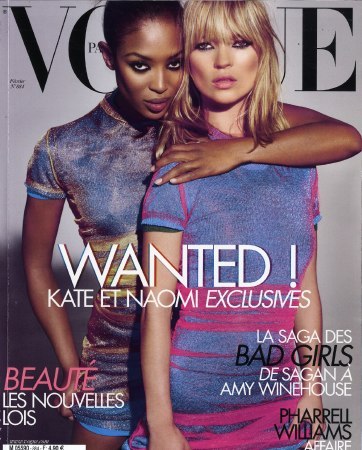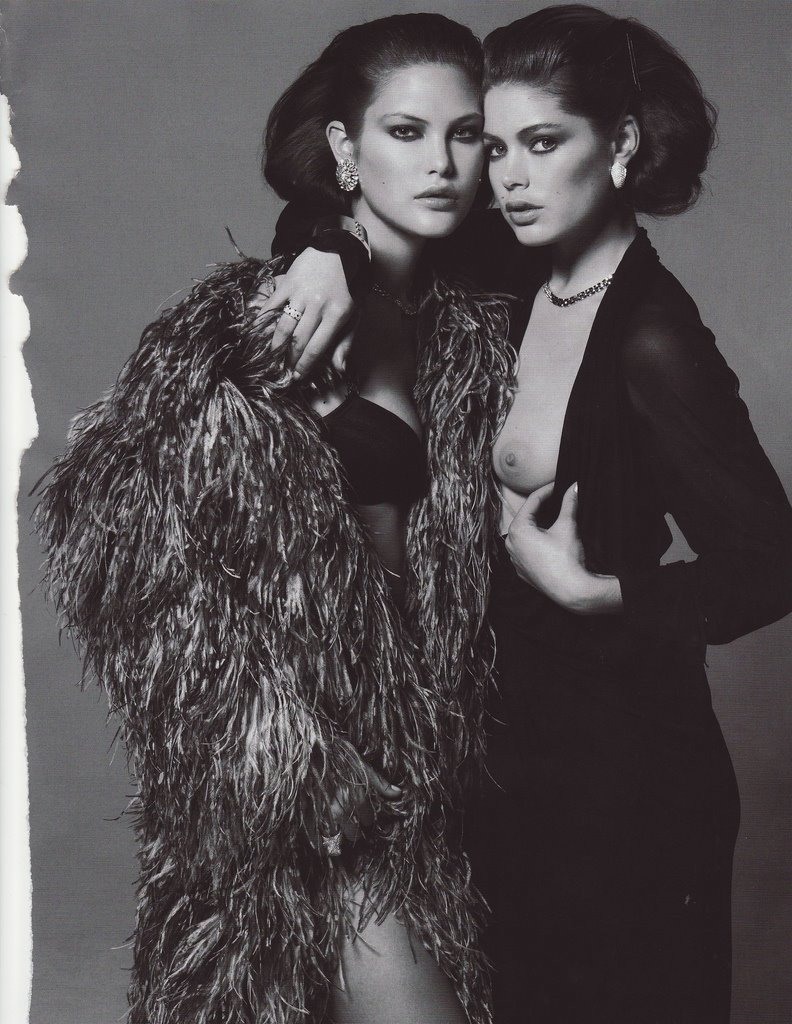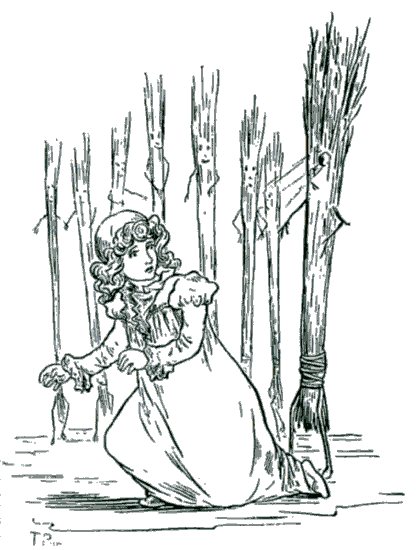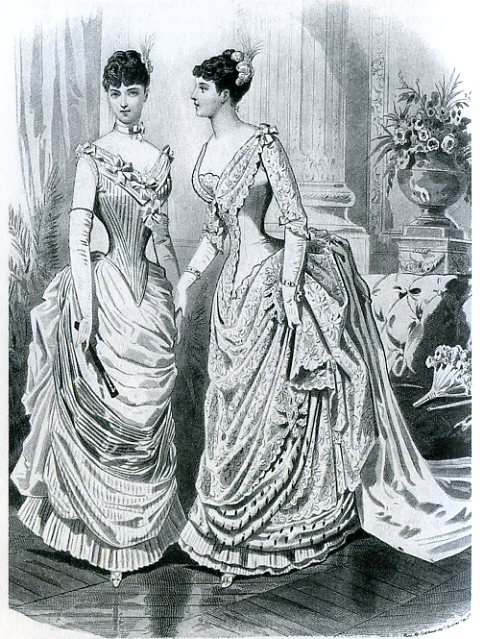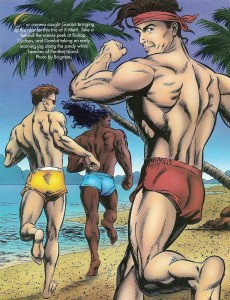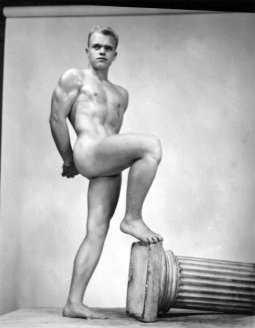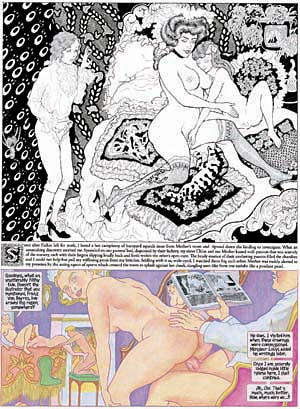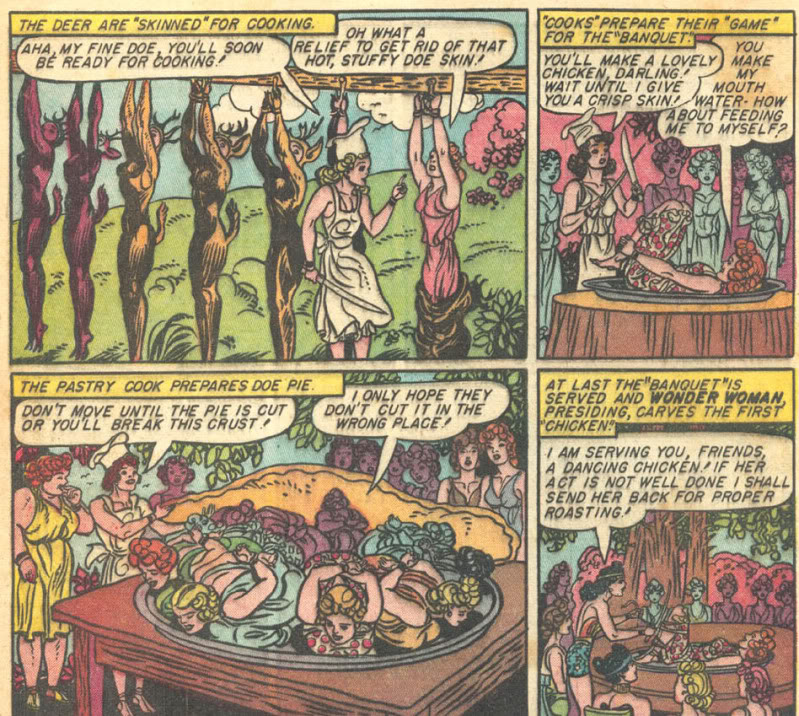I’m a huge fan of Sharon Marcus’ book Between Women: Friendship, Desire, and Marriage in Victorian England. I’ve already discussed the book in a couple of posts (here and here.) But I thought it would be fun to speak to Sharon herself, and she kindly agreed to an interview. We talked at the end of January about fashion, superheroes in speedos, gay and lesbian identity, Victorian pornography, Freud, and, of course, Wonder Woman.
Noah: So, just to get started and maybe let readers know something of what your book, Between Women, is about, I’m going to try to crassly summarize your main point. That main point being that in Victorian England, erotically charged relationships between women were not seen as necessarily lesbian nor as necessarily anti-heterosexual. On the contrary, such relationships were expected and even encouraged, and were considered an essential part of being a heterosexual women. Is that a reasonable two sentence description of what you were getting at, or have I butchered it?
Sharon Marcus: No, I thought that was very reasonable two sentence description. I think that what I would like to throw into the mix as really important is that, there are a lot of relationships that we now group together, including erotically charged ones, which were not necessarily grouped together by the Victorians. It seems that both feminists and people who aren’t very interested in feminism since the 70s see relationships as being on a spectrum of female intimacy. I don’t think the Victorians thought about things that way. They gave a lot more social centrality to female friendships than we now do, in the culture.
Even when I read contemporary sociology about female friendships, the literature was surprisingly scant, and not very specific about the gender of friendships. And when I found examples of people in Victorian England encountering women who were clearly in quasi-marital relationships that seemed somewhat sexual, pretty overtly because one of the partners was somewhat masculine, a lot of people reacted in a fairly blasé way to that which really surprised me. So I was surprised both that they recognized the relationship and that they weren’t that upset by it. Because what I had always heard about the Victorian attitude towards lesbianism was complete denial, ignorance, impossibility of believing it could even exist, or when confronted with incontrovertible proof, total scandalous shock.
What I ended up getting really interested in was that because there wasn’t this clear-cut category of the lesbian which came about with the rise of sexology and psychoanalysis— you know, in the 20th century the category of the homosexual was probably too well-defined. Because there wasn’t that, it meant that there was a lot more play in the relationships between women and in the relationship of women to imagery of women. So the fashion plates that I ended up looking at a lot seemed to be making it part of the community to look at women in a fairly objectifying way. Not just as part of objectifying oneself, but that this was what fashion was about.
Women checking each other out in a Victorian fashion plate.
Fashion was about fetishizing clothing, but it was also about fetishizing the women wearing the clothing. And what I ended up looking at was the similarity between pornography, which was probably written primarily for men, but which had a lot of sex between women. It’s not that different [in that sense] than pornography today, though, in some ways, Victorian pornography was really different from porography today. But there was the same kind of objectification of women, aggressivity of women towards women, intense interest in focusing on specific body parts.
Also the pornography, a lot of the Victorian pornography I found was really obsessed with clothing, which surprised me. They just weren’t obsessed with taking clothing off and nudity and exposure, but they were really obsessed with the latest style, and lace, and what sort of skirt someone was wearing, there was a whole subcategory of pornography that was about corseting. And there were incredible overlaps between pornography and fashion, both in terms of the fetishization, but also, fashion magazines. There was one fashion magazine that for almost two years published letters to the editor about corporal punishment of children, that were really graphic and in many cases overtly tittilated and titillating. And these were later reprinted separately, and the British library now categorizes them as pornography.
So that was a case of literal overlap. And I think the basic link is just an obsession with the body and its impulses. The presentation of the body to others, and how one perceives, and a real emphasis on the visual framing and control and pleasure that bodies can provide. But this was a case where it’s a publication for women to which women are contributing, and that is filled with women.
But it wasn’t what I would call lesbian.
Right, you’re saying that it was women appreciating women and that being part of their heterosexual identity.
And there was no perceived contradiction there. So you asked the question about fashion imagery today and its homoeroticism. And yes, there is a lot of homoeroticism in fashion imagery today. And there’s actually a great article by Diana Fuss which was on my mind while I was researching my book, and I think it’s called Fashion and the Female Homospectatorial Look, it came out in Critical Inquiry 20 years ago now. And she talks a lot about the fashion imagery of the 70s and 80s and early 90s, and the way that it’s playing on desire and identification, and the kind of twinning of women that takes place in a lot of contemporary fashion imagery that shows two women together.
Gwen Loos & Pauline van der Cruysse for Vogue Turkey November 2010 by Mariano Vivanco
But one of the things you ask was, well, is that really different now , now that there is a visible gay rights movement. And I would say, absolutely. And there’s where I can only speculate, I don’t feel like I know enough to say with any certainty what’s going on. But first of all fashion is a very gay world, a very gay male world. So that’s kind of an interesting wrench in the works, because what we usually say is that these kind of images of women together are a heterosexual male fantasy. And I don’t know about the fashion photographers, but certainly the fashion world, I don’t think anyone would claim that it’s dominated by heterosexual men, nor that it’s trying to appeal to heterosexual men.
Right, it’s trying to appeal to heterosexual women mostly, right?
Right, and I think playing too on the affinities there are between heterosexual women and gay men. Especially when it comes to these areas of life that a lot of straight men pretend not to care about, or genuinely don’t care about. You know everyone says that women don’t dress for their men in their lives, who don’t notice or care that much what they’re wearing. Again that’s not always true, but as a generalization it’s what circulates.
But I do think that now those images are always playing with a certain kind of transgressive charge. Like the one that you sent which wasn’t just lesbian, but was Kate Moss and Naomi Campbell. So, you know, it’s a black woman and a white woman…
Kate Moss and Naomi Campbell, Vogue Paris February 2008
And I think fashion since probably the 60s has become more of a site of potential rebellion or, I mean it remains incredibly conformist, by definition. It’s about being in style and doing what you’re told to be doing this year. But I think there started coming into play in the 60s a certain kind of rebellion or hipness or esotericness, being part of an avant-garde which you see shaping the imagery.
And that was interesting, too, to realize that in the Victorian period, fashion was really much more conventional. And also to see that instead of mothers and daughters fighting about whether the daughters could be in fashion…because now the sense I have is that mothers are shocked by what’s in style a lot of the time and tell their daughters, “No! You can’t dress like that.” When you read about conflict in the Victorian period, it’s about daughters who don’t want to be in style, and mothers saying you have to dress this way, this is what’s expected of us in society.
But more of the time you just got the sense that it was a real bond between the older and younger generation. There wasn’t the same sense of fashion defining a generation and creating generational conflict the way there is now. And part of the main source of generational conflict between parents and children is sex. So fashion is supposed to be sexy, it’s how you show that you’re sexy. And it seemed that non-normative sexualities can sometimes read as more sexy than mainstream ones.
I kind of wonder, it seems like there’s some of what you were talking about going on still. I mean lots and lots and lots of women, women who don’t necessarily want to be all that transgressive and women who do, just lots of women read fashion magazines, right? And they’re all about looking at images of fetishized women. So there still is this important component of being a heterosexual women which is about appreciating the fetishized bodies of other women, and which isn’t necessarily always about lesbianism at all.
I think the real question now is whether for the millions of women— I just watched the September Issue [a documentary about Anna Wintour, editor of Vogue] and it was actually really interesting, because it was a glimpse into how they put together the issue [which is the biggest of the year]…and they were clearly trying to find a story. Because there’s not a lot of suspense. You know that the September issue came out. You can’t sit there worrying about whether they’re actually going to put the issue together.
And a lot of it is about how mean and cold and harsh Anna Wintour is , trying to get some traction around that, but in fact it’s clear that although everyone around her is nervous because she’s the big boss, they also kind of worship her and think she’s amazing. But she’s the editor-in-chief, but she also has a creative director, a woman named Grace [Coddington], who is about the same age she is, and is a former model, and she is the vision behind a lot of the images.
So that was interesting to me, to see that although most of the photographers are men, there’s this women in her 50s, practically 60s, who is really kind of masterminding what the shoots are going to look like, and she loves looking at these models. At one point she refers to a husband, so presumably she identifies as straight.
I think the question now is what’s on women’s minds when they sit, millions of women, who presumably many of them think of themselves as mainstream, not just heterosexual, but mainstream, what’s on their mind as they turn page after page after page of these incredibly erotic images of women. Are they disavowing and denying that there’s any kind of lesbian thing going on? Are they actually enjoying it and perfectly aware that they’re enjoying it? I don’t know how they think about it.
I mean for writing about the Victorian period, I kind of have the convenient problem that there’s no way I can go back and ask the subjects what they’re thinking. I could read what people wrote about fashion and it just…even when there were these sexual scenarios erupting in their fashion magazines, they didn’t seem to take that and extend it to the rest of the imagery that was in the magazine. They just seemed blissfully unaware that there could be a specifically lesbian sexual subtext to any of this. And that in a way licensed the images in becoming that much more erotic.
I don’t know what is on women’s minds now. I mean, I’m a lesbian, so I look at these images as a lesbian. And I do wonder, how are other people experiencing these. And some of them are so overtly sexual, and I think in some other contexts might disturb the readers of the magazine.
from Vogue Paris
But in this context, the fashion context makes it safe, possibly because what the fashion context says is that this is about identification, not desire. But part of the whole creation of a visible lesbian identity is that it gives people a way to cordon off identification and desire. Though in my opinion they’re always blended together and it’s really really hard to say where one stops and the other starts. But they tell themselves they’re different, because identification is what you do if you just like dressing up and looking at pretty pictures of half-naked ladies, but desire is just if you’re a lesbian.
So I found your book because I googled Between Women, because I was trying to find a book that addresses what Eve Sedgwick addresses in her book Between Men, but in terms of women. When I was reading your book, it seems like you are using Eve Sedgwick’s theories, but that you’re kind of moving away from Freud. Because you’re sort of arguing that it isn’t repressed homoerotic….
I think it depends. I’ll free associate in honor of Freud, and say the various things Freud meant to me in writing this book.
The biggest concept would be the concept of repression, and the idea that sexuality is always repressed. And that can be a kind of effective circular definiion. You can argue that if it wasn’t repressed then it wasn’t sexuality. But that seems to be assuming what you need to prove, and I think becomes too restrictive a definition. Some aspects of sexuality at a given moment in time and for a given person may be repressed, but that doesn’t mean that every erotic impulse and interest is necessarily repressed. And I think that in Victorian England, women’s interest in other women was not a huge site of repression. I think that what caused more problem was if a woman didn’t want to marry a man. But a woman who married a man but had children and also wanted to go to the skating rink and exclaim over the beauties of the young women skating around…
There’s the one anecdote in your book where a woman writes about how, if it was in line with propriety and the other women’s comfort she wished that the breast of the women she was looking at would pop out of her clothes.
Yes. Yes. And that woman was married as far as I can tell. I mean I read a lot of her diaries and letters, and it seemed like a pretty genuine marriage. There was no contradiction to her. I don’t think that she actually pursued sex with women. She just felt very comfortable having this erotic appreciation of other women. It didn’t cause an existential crisis for her.
So step one where I took a different tack from Feud was not equating sexuality and repression.
Step two would be that I don’t think — I think he contradicts himself a lot and says a lot of different things in a lot of different places about masculine and feminine and whether everyone has a mixture of both, or whether everyone has a mixture of both in childhood but then as part of maturity has to become defined much more strictly as one gender rather than the other. He is really interested in castration as the way that gender gets understood, again, kind of contradictory, is that more important for men or really important for both sexes? He really I think sees there being two sexes and that that is very defining for people. And, of course along with castration he’s really interested in Oedipal dynamics, nad in the family as a source of prohibition, and that the family generates sexual desires which it then prohibits. That brings us back to repression, that being really really central. And I was interested in thinking outside of the family as the primary unit for defining, shaping, and containing sexuality. So that’s one place where I was not taking a Freudian perspective.
I think…there’s a book that came out a little bit before mine by Martha Vicinus, called Intimate Friendships, and she’s really interested at looking at how these relationships between women take on different kinds of family models. Like a maternal model, or a sororal model, or a husband-like model. And she definitely finds individual case studies that fit those rubrics. But she wasn’t’ really generalizing about a whole bunch of people. She was looking at a few specific cases, that I think she herself would say were kind of idiosyncratic. Which I don’t see her cases as necessarily as idiosyncratic as she did. I don’t see women who were in intimate relationship with other women as being so cut off from their society.
I think that I ended up getting very interested in things that did not seem to be particularly unconscious. And I guess we would say the main Freudian contribution is that a lot of what we feel and think is unconscious. I wouldn’t necessarily deny that, but it leads to this sort of assumption that for things to be really interesting they have to be hidden. And I found all kinds of interesting, wacky stuff that didn’t seem to be at all hidden. And that people had ignored because it didn’t have that charge of repression, so the critic and the analyst can come along and expose it. I was finding stuff that people were saying in diaries and letters that were meant for other people to read, that people were publishing in magazines, that they were writing in novels — one didn’t have to dig to find erotic desire between women.
And I think that in for Eve Sedgwick, it’s one of her early books, and I think she ended up moving away from this model, but she’s really looking at how Victorian society repressed erotic and sexual desire between men, and forced it to take the forms of either heterosexual exchange of women between men, or violence between men. Repressed desire can only surface as violence. Now I did find a lot of examples of aggression between women or between girls and these female objects of dolls, but again it didn’t seem like it was the manifestation of something that had been repressed, it just seemed like aggression. It seems like aggression is a fundamntal drive between people, and maybe even a fundamental part of eroticism, and it doesn’t seem to me like it’s a sign that something has been repressed.
It didn’t seem like the girls were fantasizing about whipping or being whipped by their dolls because they had no way to express their erotic desires for women. Because the whipping stories were already erotic — if they were supposed to be covering something up or serving as something that masked eroticism, they weren’t doing a very good job of it! And there were always these moments in these stories too where a girl would talk about an older woman in a very admiring or adoring way, or even talk about wanting to marry some woman. So it didn’t seem like any of this stuff was hidden, and perhaps because these were girls who were being discussed and they were so young, there wasn’t as much concern.
From Clara Bradford’s, Ethel’s Adventures in Doll Country, 1880, with sentient sticks for better chastisement. Reprinted in Between Women.
Though that was of course very surprising, because what I would have expected knowing what I know about the Victorian period from a select group of novels…I mean, I’ve read many Victorian novels, but it has to be said that one thing I found was that Victorian novels are not necessarily representative of anything except Victorian novels. There’s a whole other world of Victorian discourse that shows things and says things that don’t show up in novels. The Victorian novels would have led me to expect that girls were supposed to be sweet and not aggressive and not have any kind of sexual desire whatsoever or any kind of erotic expression, and that just turned out not to be the case. And of course these are books written by adults, not by girls themselves, but usually by women, so it was interesting to see that these women are perceiving all these things in little girls that are very very different than primarily male novelists or Victorian painters —who would paint these very saccharine sweet angelic looking little girls — were willing to think of as being part of girlhood.
So yeah, the violence between girls and their dolls doesn’t seem like it’s there because there’s no other way for girls to express affection for feminine objects. It seemed like just part of what it meant to be a girl.
So in arguing that this particular thing isn’t repression, that seems to call into question at least to some degree how much repression works in other areas as well, right? In terms of the repression of homosexual desire and whether that’s really a problem.
I don’t think it necessarily proves that Eve Sedgwick was wrong, because I do think that male sexuality and female sexuality were treated fairly differently. I think it comes as a little bit of a surprise, to me even, after haivng spent all this time with this material, to realize that in some ways male sexuality in the 19th century might have been more severely policed than female sexuality. At least same-sex eroticism. Because we’re used to thinking that men, especially middle-class and wealthy men, you know, there was a double sexual standard, they could have sexual experience before marriage, they could have extra-marital affairs, they could go to prostitutes. None of these things were really allowable for women. They would have caused women to be completely ostracized, whereas this kind of behavior in men was tolerated, even encouraged.
But it turns out that when it came to same-sex eroticism, I do think that men were more policed than women. And I don’t think Eve Sedgwick was…I think that was the intuition she was working with in a way, and some historical research has appeared since her work that suggests that it was actually true. And you know there is no female equivalent to the Oscar Wilde trials. Even though there were women, some of them fairly prominent activists, journalists and artists, who were in relationships with other women. But there wasn’t the same sense that your reputation could be utterly ruined by haivng your same-sex affairs exposed.
from The Queen, 1851, reprinted in Between Women
And partly there was a legal difference, in England anyway. Because it was criminal for men to have sex with each other. Sodomy was a capital crime and, while in the early modern period there were cases of sodomy between women, by the 19th century sodomy was understood as something that existed only between men.
One of the results of this is that your book is a lot cheerier, than Eve Sedgwick’s book. Because for you the erotic relationship between women, it’s all good. It’s good for everybody, right?
Yes. (laughs)
It’s good for women, because they get emotional benefits, but it doesn’t hurt men either, because it makes women more conventional, in some ways.
Yes, that was true of women’s erotic interest in one another, and …the only thing I would want to throw into the mix is that one of the things I ended up wanting to insist upon fairly strenuously was that female friendship, while it offered a lot of the physical intimacy and interest that we associate with eroticism, that female friendship was not the same as what was going on in the fashion magazines. In that female friendship was this very idealized category where women were kissing and hugging and writing each other these rapturous letters that now read like love letters — these relationships really were, many of them, were friendships.
And one of the things I was trying to point out too is that it’s complicated. You can’t read one letter that a woman sends to another and say, “oh here we see, just friendship,” or here we definitely see erotic interest. You have to look at the history and context of the relationship in the person’s life.
So I would say in terms of the cheery view, one of the things that I expected, that had been said a lot in the scholarship, was, oh, women’s friendships were marginalized and suppressed and demeaned. And there are a couple of people [in the Victorian period] who would say from time to time, women shouldn’t put too much energy into their friendships, or women’s friendships aren’t to be trusted. But in general I found this incredible idealization and glorification of female friendship and respect given to it, and that women actually made a lot of time for their friendships. Whether they were friendships with people they saw on a regular basis or friendships that were epistolary. I mean, one thing you come away with from this material was awe at the amount of time people had to write letters. I guess with our age of blogging and emails we probably are giving the Victorians a run for their money.
So female friendship wasn’t seen as competing with marriage. And women’s erotic interest wasn’t seen as competing with marriage. And there weren’t — because there wasn’t a movement of women who were interested in exclusive sexual relationships with women and avoiding relationships with men, those relationships weren’t seen as a threat either because they werne’t linked to a whole political challenge to the system of heterosexuality, even if the individual women in them did see them as challenging heterosexuality.
I just didn’t find a lot of evidence of anxiety.
You also say that there isn’t this anxiety among men, there isn’t this anxiety among women, but at the same time you were arguing that the existence of this sort of normalized erotiized bonds between women meant that women who were lesbian could form marriages. Essentially female marriages then were less controversial then than they are now.
Yes, female marriages didn’t seem as odd because in many ways they overlapped with relationships that the majority of married women had.
So one of the things I was going to ask Is — did the Victorians do better than we do in some sense in terms of their treatment of gay relationships?
I thought that question was very interesting. If I were asked if I would rather live then or now, no question I would pick now. Not only do we have contact lenses, running hot water, refrigeration…but I think that there’s…
Okay, sexual identity really fixed sexual identities are really constraining in a lot of ways, and also often very inaccurate. I know very few straight women who haven’t at some point has some sort of sexual experiment, affair, contact with at least one other women, often several, but they never really stop thinking of themselves as straight.
You may have some sample bias.
I don’t really care, but of course people tell me this stuff, because of who I am.
(laughs)
This is also, like when people were in their twenties, before they got married. I just think things are very fluid still for women, but it all has to be thought of in very different ways.
The way the Victorians had it better off I think is that they didn’t have to sit around torturing themselves with frankly rather inane questions like, am I a lesbian? Am I straight? Am I bisexual? On the other hand, I think it can be difficult not to have ways to organize your experience.
from Revue de la mode, 1885, reprinted in Between Women
I mean the women in female marriages seemed to find each other very easily, so there were these subcultures or networks of women who lived in Italy or lived in England, and a lot of time they were expatriates, and then if they went to Paris they knew who to look up. So they didn’t seem to be isolated — I mean that’s one of the things identities brought people in the twentieth century was a sense of community. But of course communities always end up foundering when they’re based on identity because people start policing the identity and if you step outside the defined boundaries of the identity it can be really problematic.
I think you see the same thing now with gay marriage; the way that the gay community is in some ways fissuring about the question of whether marriage is a permissible part of the gay identity or not. So that people who are really invested in queerness are kind of…I would almost say repulsed by the embrace of gay marriage among a lot of gay people, because they feel that was not what being gay was about. Being gay was about saying I’m going to defy institutions like marriage.
So I see all the negative baggage that comes with identity. I also see how being part of a group that form the start was defined by the mainstream in terms of stigma and deviance, has been kind of a mixed blessing.
But I don’t know, I think it’s in some ways I can’t even answer the question, because it’s hard for me to really imagine what it would like to be me living in this very very different time. I mean I could sort of establish a conceptual and sympathetic scholarly relationship with these people, but I don’t know who I would be if I were in Victorian times.
Well I think one of the things that’s interesting about it is — you could argue about whether the Victorians were better or whether it’s better now, but there was a period in the middle where it was clearly worse than either, right?
Yes.
I was reading John Boswell writing on gay Catholicism in the Middle Ages, and he was basically arguing that the worst time in history to be gay was like 1950 in the west.
Well, yeah, sure, being identified with Communists, perverts, pedophiles, probably serial killers — it’s interesting, because there’ve been periods in time when sodomites were identified with kind of the unthinkable, Satanic, bestial, the thing that’s so bad we can’t imagine. But no one actually thought of an actual person as being a sodomite. This was a point that Alan Bray made in his book on sodomy in early modern England. There’s all this discourse about sodomy as being the worst thing imaginable, so you can’t even imagine it. And then there are all these people writing about how John had sex in a closet with Tom. And they’re not connecting the dots. Why aren’t they connecting the dots? Because a sodomite couldn’t even be a person that you knew. You couldn’t put the two together.
Unfortunately, I think what happened around 1950 was — well I guess everyone had become so closeted that no one actually knew any gay people anymore, they didn’t know that they knew any gay people unless they themselves were gay. And then when you found out someone was gay, it was much easier to connect them to all this propaganda about how evil gay people were. So I think it was the combination of this association of gay people with a set of fears that were really panicking people and the intense closeting that was a response to all the witch hunts that were going on. And I do think that one of the real big things that changed all of that was people coming out more. It’s very, very difficult to really demonize people that you know. I mean, people have proved that they are quite capable of doing that under the right circumstances, but there really have to be circumstances.
And there we go back to the comparison between the Victorians and now. People couldn’t come out unless they come out as something, so there you need the identities. They’re limiting, they allow a group to be singled out, and generalized about in a way that the Victorians just didn’t do. But [identities] also limit what people…I don’t think most people feel comfortable acting on the range of their erotic impulses. Well sometimes that’s good….
(laughs)Well Freud would say that’s really good, right?
Because sometimes those impulses are destructive, but I think that in some ways, yes the Victorians were a little, unexpectedly, counterintuitively, were more sexually free than people are now. Maybe not sexually free, but erotically free. Because there wasn’t the same close connection we make now between erotic impulses and sexual identities.
I also wonder if it’s in some ways possible to sort of see the Victorians in this more positive light because things are…because Eve Sedgwick, part of what was going on with her, part of why it was such a grim view, was because she was writing during the AIDS epidemic, and it was really depressing. And I’m wondering if the fact that now we’re moving towards a place where most people think of marriage between women as okay — if that’s one of the things that makes it possible to recognize that the Victorians thought it was all right as well.
Well, I think it’s impossible to write about the past without being influenced by what’s going on in the present, and I think it was really interesting to me to see how in my lifetime, I’m 44, people had gone from being really incredulous about the existence even of actual lesbians, I mean, like really, is that even possible, what do they do? Side by side with the constant pornographic representation, usually not too accurate, but still it’s there, of what lesbians do. But there was this sense of unreality about lesbians, and maybe hyperreality about gay men.
How quickly people could move from that to, oh yeah, they get married now. Oh yeah, they have kids now. It took so little for people to be able to acknowledge the existence of something which a little while before they had thought of as completely unthinkable. So I definitely approached the Victorian period with a sense that what people thought was possible erotically or what people accepted or what people would or wouldn’t be shocked by could be very different from what I expected, and might be different from one decade to another or one group of people to another. Because I had seen how rapidly attitudes could shift.
So it wasn’t so much only that things had gotten better, but that things had changed so fast and so intensely in ways that you know that in the middle of the AIDS epidemic it didn’t seem possible that things could change that quickly, just as when it started it came out of nowhere. From the 70s being such a period of sexual celebration, and then all of a sudden there was a really huge health crisis going on.
So a lot of what the book is about over and over again is plasticity and mobility and elasticity and how much things can change. And I had definitely lived through that. I hope we don’t live to see things take a massive turn for the worse. But experience says it could happen. It could definitely be something on the horizon.
So getting towards the end maybe I’ll force you to talk about comics. I gave you that link to the post about the superhero swimsuit issue, with the beefcake — which presumably was mostly for men, and in fact, superheroes in general are male fetishized bodies to be observed by men. And that is more or less okay as part of a heterosexual identity — you take some flak for it, so maybe it’s not entirely ok, but mostly ok. So obviously male homosexuality and lesbianism are different, but I wondered if you felt like there was a parallel there.
There definitely seemed like a parallel — it seemed like there were multiple parallels, which made it a parallel. There are these exaggerated bodies that are rendered in ways that are on the one hand are kind of realistic, I mean there’s sort of a photographic aesthetic going on, but the bodies are completely unrealistic, like the bodies of women in fashion plates of the Victorian period — no one could have certain features of those bodies.
by June Brigman and Tom Palmer from the Marvel Superheroes Swimsuit Special
And this is clearly for a male audience, and a male audience that has to be very mixed. I read a lot of the comments, and I know that physique magazines were ways that — the audience for physique magazines in the 50s was a very gay audience, and it was a way to sort of send material through the male that looked like it wasn’t gay.
from Tomorrow’s Man, a 1950s-1960s physique magazine
You know that the guy who drew Superman was sort of really into body building magazines.
Didn’t he also have a whole set of fetish drawings? I saw that book….?
I thought that was really interesting…
So, on the one hand you could say that there’s a double audience. Yes, this is for people who really think of themselves overtly as having gay desires, and then it’s for a straight audience that is just into superheroes. But I think that what is also going on is that it’s for the double audience in each of us. It’s for the gay guy who wants to be into this pretty straight thing of the super-hero, and for the straight guy who’s into superheroes, but, you know, who enjoys looking at these pictures of men with their huge muscles and their bulging speedo bathing suits.
by Jae Lee
And you don’t have to, really more for the straight guy than the gay guy, but you don’t have to have an existential crisis about it the way you would if you were looing at something that was more overtly gay. And also it’s not overtly gay in the sense that it’s not images of men having sex with each other. And I think that’s an interesting difference too. Enjoying looking at pictures of sexualized bodies, it feels different to a lot of people I think than looking at pictures of people having sex, which at this moment in time it’s really easy to find also.
Right. Just a click away.
Yes. (laughs) Hard to avoid them sometimes.
Is there a parallel with the Victorians at all, in terms of there being heterosexual males expressing or being allowed to express desire for other heterosexual males and having that reify their heterosexual identity rather than calling it into question?
Well, in the Victorian period there definitely is a lot of the painting and the photography, there’s a lot of imagery of beautiful men. And people have often glossed over that in talking about the way the body is represented in the 19th century as if only female bodies were represented, but that’s just not the case. And a lot of people producing the imagery of beautiful men were men. Some of them were gay, some of them were not. The audience for this imagery was huge, and so has to have included people of all kinds.
I definitely found a lot of examples of young men talking openly about their admiration for — you know, men in our equivalent of high school or even college — talking about how beautiful another man was or how much they love him, or how jealous they are because he seems to be more interested in some other guy than in him, and it’s not always clear to me, and I didn’t do the kind of in-depth research that might give me a chance to clarify — whether they were talking about someone with whom they were having some kind of physical sexual relationship with, or whether it was just this romanticized friendship that women have with each other. Although I think Eve Sedgwick was right about the cases she was looking at and about the culture in general, I think that even for the Victorians and despite there being more repression of male homoeroticism, it wasn’t completely repressed, and there were male friendships that had a real erotic component.
In terms of pornography I would say, for highly sexual imagery — well comics are not, I mean nobody thinks of speedo bathing suits as pornography — it would just be a comic. I mean you wouldn’t get nervous if you were a teenaged boy buying that in a store, right?
Probably not.
Because Victorian pornography was much less visual. It was much more textual. And the thing I really noticed when I was reading it was how polysexual it was. It was almost as though the convention of it was, okay, now we’re going to have the men having sex, and now we’re going to have the women having sex, and what was really noticeable and very different from now was that so much of it was about family members having sex with each other. Now the uncle and his nephew are going to have sex, now the aunt and niece are going to have sex, now the brother and sister are going to have sex.
That exists now too…
But it’s a niche now.
You know where it has historically been a bigger deal recently is Japan. There’s a…
I know there’s stuff about mothers and sons, I read this…
Anne Allison. That’s a great book..
That’s a fabulous book. That was one of the best books…I read that when I was doing the research for Between Women and I didn’t really get to use it that much, but I thought that was a really really great book.
So I think part of my answer has to be, hmmm, I don’t know, because I didn’t focus on men. I mean in that sense I presumed some of the gender differences that in a way I ended up saying might not have existed, but I had to limit what I was doing somehow. So I think that there are other people that could answer that better than I can. But I know that there are a lot of images of St. Sebastian, and he was kind of a gay icon and they were sort of prized among gay men.
Saint Sebastian by Titian, 1570
But they were hanging in museums and showing everywhere and nobody was saying take that down. It was something that all male art critics and all the men who would go to art galleries would look at. And I think that there were plenty of statues of men, basically the neo-classical equivalent of superheores in speedos, I think that was as common in statuary as images of women. It depends on the country of course, so France seemed to show a bit more of a predilection of images of women. And then in the 19th century there’s sort of less and less imagery of men.
I mean, one of the famous Victorian boys books of the 19th century, Tom Brown’s Schooldays, it’s all about boys worshiping each other, and that book was seen as one of the key contributions to the Victorian discourse of manliness. So boys’ adventure fiction would be another place I would like, a guy named David Agruss has been writing a lot about the homoeroticism of Victorian boys’ adventure fiction. So I think there’s definitely sites like this, sites that seem to be the sort of ne plus ultra of masculinity, of heterosexual masculinity that are so involved with masculinity and so interested in masculinity that they end up being also homoerotic.
Which Eve Sedgwick would say would get them in trouble, but which seemed to not necessarily have done so.
I don’t think the authors of boys’ adventure fiction were getting in trouble.
I was winding the conversation up, but Sharon brought up Lost Girls…so we decided to talk about that a bit.
I was surprised actually that Lost Girls hasn’t come up.
Oh yeah? Have you read that?
Yeah.
What did you think?
I didn’t know it existed while I was writing Between Women and then in 2008 I was actually in Paris on leave for a couple of months and I decided I wanted to engage with an aspect of French culture that I had not engaged with before. So I thought, French movies aren’t what they used to be and I’d seen enough of — I mean, I still went to a lot of movies, but there was another time before that I had been in Paris that I think I went to a movie every night.
So I thought what is there? It’s not going to be pop music, that’s just going to be too depressing. So I thought, oh they’re so into the bande desinee…and in the meantime I had of course read more graphic novels and things like that. And I would frequent these various comic book stores, which were really pretty inspiring and they would have a lot of American stuff. And they had Lost Girls which is British not American right, and I was like — what is this, I’ve never seen this before.
And I think of it as a great retort to A.S. Byatt’s Possession, which is — there are a lot of neo-Victorian literature that one of the main things it does is try to go back and imagine, well, if we were to rewrite all these Victorian stories and put sex into them, what would they be like? So that’s what A.S. Byatt, and that’s what Sarah Waters does, really trying to imagine what lesbian Victorian stories would be. And I really like the idea [in Lost Girls] of taking these actual fictional characters and imagining sex lives for them. And I was really pleased on all levels to see how much lesbian sex there was in there.
(laughs)
It really was like a Victorian pornographic world, because it was just like, let’s go for every configuration possible.
from Lost Girls by Alan Moore and Melinda Gebbie
So you liked it.
Yeah, I did.
I mean I wasn’t — I’m not a comics critic, so I wasn’t trying to have a really critical take on it, but I found it sort of delightful. Like Alice and Dorothy and Wendy get together, and have a kind of Bocaccio you know Sadeian exchange of stories and sex that just goes on and on and on
It’s interesting because that book is all about the evils of repression.
Well, that’s true…
Right, I mean the idea is that if you — not just if you have sex but if you talk about sex…pornography will free your soul.
Mmm-hmm, mm-hmm right. Yeah. Well, I think I have enough of a late 80s legacy in me that I think, sure, I don’t believe completely in sexual repression and therefore can’t believe in sexual liberation, but I do think that expanding the sexual discourse that we have is better than the alternative, which is closing it down. And I felt that the book — it felt like it had a different sensibility to me than a lot of stuff you read, and so I enjoyed that. That aspect of it.
Did you know that Alan Moore was in a unconventional — he was in a long term relationship with two women.
No — I didn’t know that. Polyamory?
Yes, they were in a polyamorous relationship, which ended when they dumped him. And then the woman he did the — Melinda Gebbie who did the art is his sweetie now. Then and still.
No, I didn’t know that. Nor did I know that, if I’m remembering correctly from your blog, that the creator of Wonder Woman was with two bisexual women. Two bisexual women who were like his roommates?
No, one of them was his wife and one of them was his lover, and he had kids by both of them, and then after he died — he died of I think lung cancer relatively young, and the family stayed together after he died, the two women stayed together until they died. He was an odd fellow.
It’s so interesting to me — it’s not surprising there there are all these varieties of relationship and there are billions of people in the world, so if there are even hundreds of thousands of really distinctive kinds of relationship it’s not necessarily statistically significant for the sociologist. But what is interesting is that people who are in relationships that are so different from what we think is the norm are able to create these culturally central characters and narratives and imagery that a whole bunch of people who might feel really alienated form these people’s life choices can embrace and identify with. It’s kind of like the Rock Hudson phenomena.
The interesting thing about it too, especially for Marston, saying that he was able to create this very popular character despite his kinks — isn’t really right. I mean it’s because of them.
Yeah, no, I wasn’t saying despite his kinks. The “despite” part that you’re hearing is that I think if you polled everyone who’s ever enjoyed Wonder Woman, what do you think of polyamory, a lot of them might be like, “oh not for me,” or “I wouldn’t want anything to do with that,” or “I’m against that.” But then…and it’s not like Wonder Woman was about that, but there must have been some relationship between his life and what he was…
She was totally about his kinks. I mean, it’s kind of insane.
I loooove Wonder Woman.
Have you seen the early stories?
No… I’m not that knowledgeable.
She gets tied up like every other panel.
Yeah…
I remember being a little kid and wasn’t the Lone Ranger always getting tied up? I think he was always getting tied up. Maybe it’s a theme in comics in general.
It’s way more in Wonder Woman — you know he has her getting tied up, and there’s all this very — there are lesbian relationships which are not especially repressed, and there’s all this cross-dressing and there’s — oh, there’s the one story where the Amazon ritual is that they dress up as deer and then they hunt each other and then when they get caught they get put in these giant dishes, and they pretend to eat each other.
Oh my god.
from Wonder Woman #3, William Marston and Harry Peter
Yeah, it’s crazy. He was nuts. And it was great. He was a genius. But it’s really — this is for under 8 year old girls.
Yep. Well there you go.
You are not at all surprised.
No, no. Not really.

